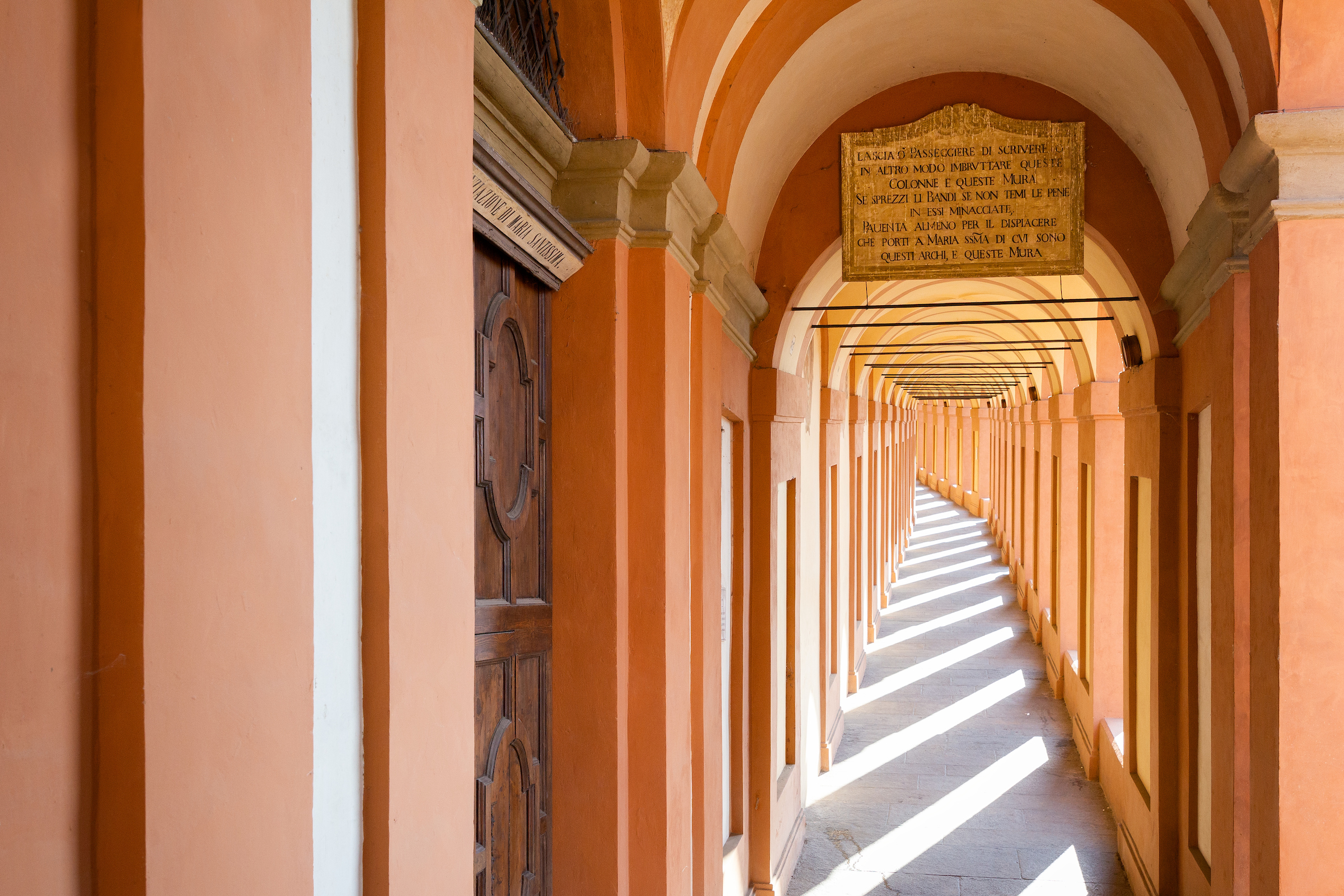In the shade of the porticoes - 6th section: San Luca
Updated on 16 January 2025 From Bologna Welcome
The Portico of San Luca and the Meloncello
Arch are part of a winding route embracing history, faith and daily life. A
place where every step and every arch is brimming with a tradition that still
lives on today, suspended between the city and the nearby hills.

Famous for being the longest portico in the world, with its
666 uninterrupted arches, the Portico
of San Luca was built between 1674 and 1739. It stretches for about 4
kilometres and, starting from Porta Saragozza,
connects the centre of Bologna to the top of Colle della Guardia hill, known to the locals also as Colle di San
Luca. The portico’s original function was to offer pilgrims a route sheltered
from the elements on their way to the Sanctuary of San Luca, which
stands at 300 metres above sea level and can be seen from most areas of the
city.
At the exact mid-point of the route stands the Meloncello Arch, designed in 1721 by the architect Carlo Francesco Dotti. The arch with its elegant curves supports the portico that winds its way up the hills, creating an outstanding scenic transit point. In fact, it is from here that the portico leaves the rolling plains of Via Saragozza and begins its slow ascent through the hills.

Continuing along the portico, you will
finally reach the Sanctuary. Legends have it that the 666 portico arches
represent the "serpent" of evil that is defeated and
"crushed" by the Madonna, symbolised by the church.
Every day, walkers, runners and cyclists climb this portico in search of
a quiet place to reflect or train. At the weekend, the portico comes alive with
families and people of all ages enjoying a walk to the Sanctuary or towards the
hills. With their delightful play of light and shadow, and the warm ochre tones typical of
Bolognese architecture, the portico of San Luca and the Meloncello Arch are
today among the favourite spots in Bologna.
"In the shade of the porticoes" is the column that explores the twelve Porticoes of Bologna, recognised as a UNESCO World Heritage Site since 2021. In addition to offering insights into their history and architecture, the column also tells of the daily life of those who work, travel and live under those porticoes every day.